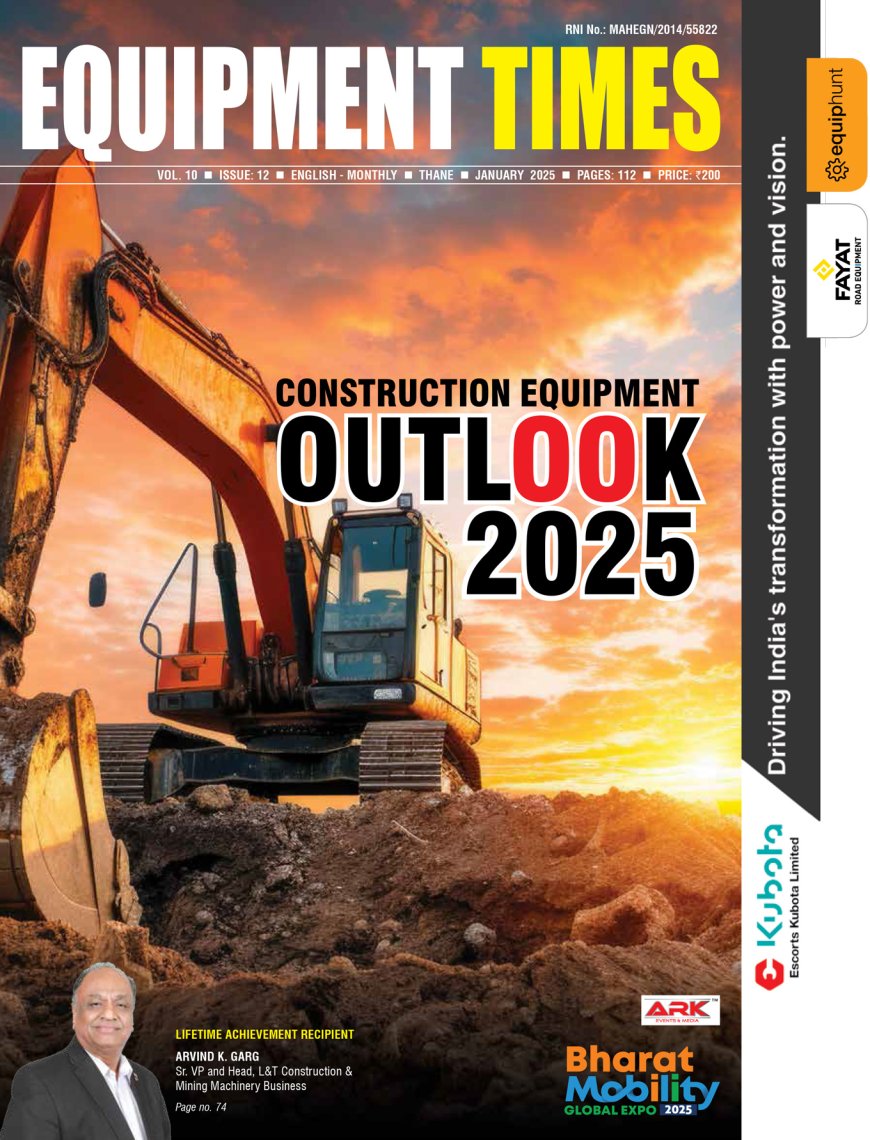LEADING The Band WAGON
Material Handling or Warehouse Equipment has always been about keeping up with changing technology. Whichever pathway is the best fit, manufacturers will need to pursue higher levels of automation through improved cost efficiencies to release resources for investments, enhanced digital

Material Handling or Warehouse Equipment has always been about keeping up with changing technology. Whichever pathway is the best fit, manufacturers will need to pursue higher levels of automation through improved cost efficiencies to release resources for investments, enhanced digital technologies, and advanced-analytics capabilities. Equipment Times finds the market outlook, revolutionary changes, technological trends, and growth plans for the Warehouse Equipment.
Material handling or Warehouse Equipment, which includes the movement, storage, and protection of products, is only as effective as the technology it relies upon. And each of the industry’s primary subsegments—including cranes, conveyors, and forklifts—has its own markets, technologies, and capabilities.
The rising need for global production companies to automate operations, and foster flow of goods in an efficient manner is the key force driving the market, at present. Growth in the market is also driven by improving investment in the construction and industrial sector, growing consumer spending on non-durable as well as durable products, improvement in fixed investment spending, and rise in mining activities worldwide.
Application areas
Material handling equipment is any mechanical equipment that might be used for movement, storage, control, and protection of materials, goods, and products throughout the supply chain which includes various processes such as manufacturing, distribution, consumption, and disposal. It is classified into different types of handling equipment, which are transport, positioning, unit load formation, and storage. Transport equipment is quite easy to define as they are equipment that is used to move material from one location to another.
They include conveyors, cranes, industrial trucks, manual handling equipment, and a yard ramp. Positioning equipment is equipment that is used to handle materials only at a single position or location. They include lift tables, balancers, hoists, ETC. Unit load formation type of material handling equipment is used to restrict materials so that they maintain their positional integrity when handled during a single load or to manipulate the particular material during transportation. They include various components such as pallets, slip-sheets, ETC.
One of the major restraints in this market is particularly associated with the high costs of deploying the said equipment on ground level, not to mention extra costs associated with repairing and maintenance of some of that heavy machinery. Also, high costs of investing significant cash flow in order to develop and deploy some of the warehousing software which might be needed to properly integrate and required to operate some of the machinery involved.
Trends…
Growth in the MHE industry is underpinned by the replacement of antiquated machinery with new automated systems and robotics amid the increasing production shift towards artificial intelligence and Industry 4.0. A notable trend in the industry is increasing switch to cleaner battery-powered electric materials handling systems.
Demand for automated guided vehicles, and automated conveyors are expected to particularly register strong gains through the forthcoming years. Mature industrialized countries in Europe and the US contribute to the bulk of revenues, fueled by healthy replacement demand and the move towards automation & modernization of production processes in key end-use sectors.
Traditionally, material-handling sub-segments have been highly fragmented. This fragmentation has allowed manufacturers to specialize in their respective areas, benefiting from existing brand recognition and relatively stable competition. In recent years, these sub-segments have closely mirrored economic cycles, further allowing manufacturers to benefit from comparatively steady growth.
Today, however, manufacturers are having a harder time adapting to a number of trends. Urbanization and an aging industry workforce have required manufacturers to offer progressively integrated and automated services and products. Accelerating adoption of e-commerce on a larger scale is putting additional pressure on the segment with regard to SKU granularity, delivery times, and responsiveness. Furthermore, the advent of artificial intelligence (AI) and automation has created new market sub-segments for automated guided vehicles (AGVs) and automated storage-and-retrieval systems (ASRS), both of which are growing at a much faster rate than traditional subsegments and creating significant challenges for OEMs.
Industry players cannot take success in material handling for granted: the approaches, methodologies, and reliance on macrotrends that worked in the past will no longer suffice. Our research points to a need for greater market integration and investment in R&D and equipment. Four pathways can help manufacturers adopt new automation technologies: moving toward a more integrated market, diversifying through partnerships or acquisitions, innovating in-house technologies, and revamping delivery models to reflect evolving customer needs.
Varying levels of automation and growth
The material-handling market has three use cases for equipment: warehouse management, shop-floor operations, and field operations. These spaces share a few common drivers of success, such as accuracy, reliability, and cost efficiencies. In warehouse management, key success metrics include picking and sorting speed and tracking accuracy. Shop-floor operations tend to value timely delivery of products to production lines & low operating costs. Finally, the field-operations use case benefits from mechanical capabilities such as construction, mining, and ports, as well as the flexibility to handle multiple operations simultaneously.
Market trends: Performance variability and common success factors
The need for automation—and the concurrent push to collect and store the amount of data necessary to support advanced analytics—is the result of ongoing trends in the broader material-handling market, which can require different actions by manufacturers. Specifically, each segment must contend with specific trends based on its resilience to the COVID-19 crisis, the impact of market-investment schemes, changing regulations, and increased customer demand for automation or digital solutions.
One of the major trends that can be observed in the market is the widespread application of the Internet of Things (IoT), cloud-based operations, and artificial intelligence, and all of this is fueled by the even greater application of these methodologies. This has typically flown down and given birth to fully automated storage and retrieval systems (ASRS), this is also equipped with intelligent software such as Big Data, which is used for real-time 3D visualization and business analytics. This sector going to be given a push by the rapidly growing Material Handling Equipment Market which is coming times is going to be its’ biggest applicator and user.
The supply chain has greatly benefitted from increased throughput provided by this advancement in particular, as it has provided both manufacturers and suppliers to view greater clarity in performance and information sharing which can be one of the growth drivers. Many of the leading logistics providers are assessing the market conditions, out of which many of them are conducive to better serving the Material Handling Equipment Market. The pharmaceuticals industry is also a great benefactor of this increased automation, as they can now have a lot better visibility in terms of logistical support.
Hits: 1










